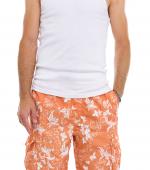CHICAGO — As customer demand and changing economic conditions, dry cleaners are increasingly finding themselves becoming “all things clean” to their customers as they diversify their services.
In Part 1 of this series, we looked at the evolution of dry cleaning and diversification’s place in it, along with how Steve Rettler, owner of Minneapolis-based All Seasons Garment Care and Tailoring, has added more services in the past few years. Today, we’ll examine the choices of a dry cleaner who put his equipment to use outside of the cleaning industry.
New Businesses, New Opportunities
For Tim McCann, president of Best Companies in the Albany, New York, area, diversification meant forming different, yet complementary, companies. Best Companies consists of Best Cleaners, Best Restoration and Best Logistics and Transport.
“We’ve done a lot of the same things that other cleaners have done — we’re in the full textile care business,” McCann says of Best Cleaners. “Along the way, we went from that traditional shirts and pants drycleaning service to full-service cleaning. We do our own leathers, we do our own gowns, and we do our own carpet cleaning, both wall-to-wall and area rug service.”
The first expansion into areas besides dry cleaning happened for McCann when Best became a CRDN partner and began offering restoration services.
“In 2008, we had the financial downturn,” McCann says, “and that’s what prompted us to look at restoration. At that time, we had an immediate 20% decline in piece counts, so we had a lot of extra capacity, both in terms of equipment and people. At that point, expanding into restoration was really about reducing risk and finding an opportunity to use the assets and infrastructure we had.”
This element became more of a focus during the pandemic.
“During COVID, we started to reimagine ourselves as a company that takes care of people’s stuff, beyond textiles,” McCann says. “Obviously, CRDN did have a significant hand in pushing us in that direction when we added electronics and art restoration, along with full-contents restoration.”
It was also during this time that the third element of Best Companies came into being.
“We started a logistics company, where we grabbed a contract with Amazon during COVID in the fall of 2020,” McCann says. “We provide ‘last-mile’ delivery services. For us, we felt like that fit with our mission of taking care of people’s stuff. So now, we’re delivering their new stuff, and we’re taking care of their existing things.”
Having three businesses that are in related-but-separate spheres has given McCann needed flexibility.
“Each of the businesses has had ups and downs,” he says. “Two years ago, retail dry cleaning was challenged. Now, profitwise, retail is performing the best of the three businesses. That’s allowed us to invest so much in restoration to be great at full contents. There’s a lot of capital expenditure related to growing restoration, and there’s a lot of investing in the team.”
This diversification strategy, McCann has found, offered options to keep the company as a whole healthy: “Each of these cycles has played off each other, and it’s been tremendous to have three different levers that we can pull on, so that we can invest where we want to invest.”
But operating this type of multifaceted company also adds a degree of difficulty in leadership and management.
“It’s become a very different business,” he says. “It’s no longer about only cleaning and restoring clothing and textiles. With the restoration of full contents, it’s a full moving company. That requires a different type of team member, and it’s a different type of relationship with the homeowner, the carriers and our business. It’s become much more complex. Our back offices have become much larger, and the overhead is more significant.”
Come back Tuesday for the conclusion of this series, where we’ll explore ways that diversification can offer a competitive edge for dry cleaners. For Part 1, click HERE.
Have a question or comment? E-mail our editor Dave Davis at [email protected].
























